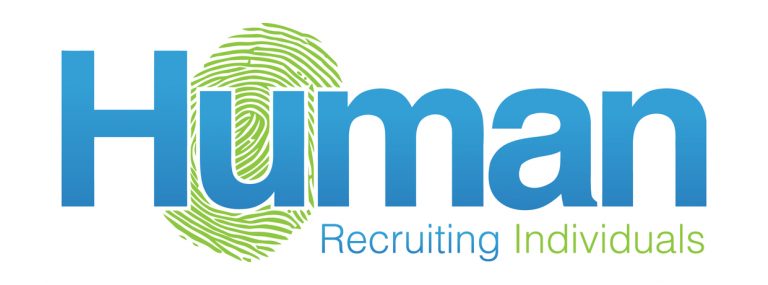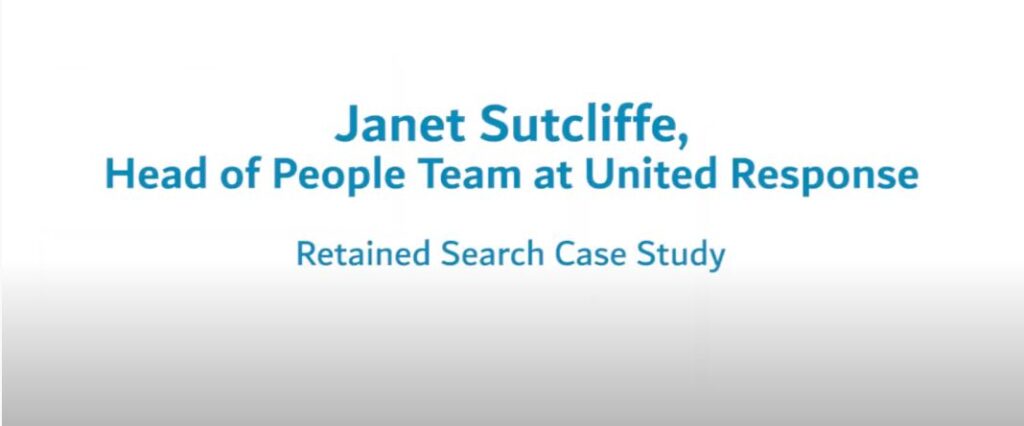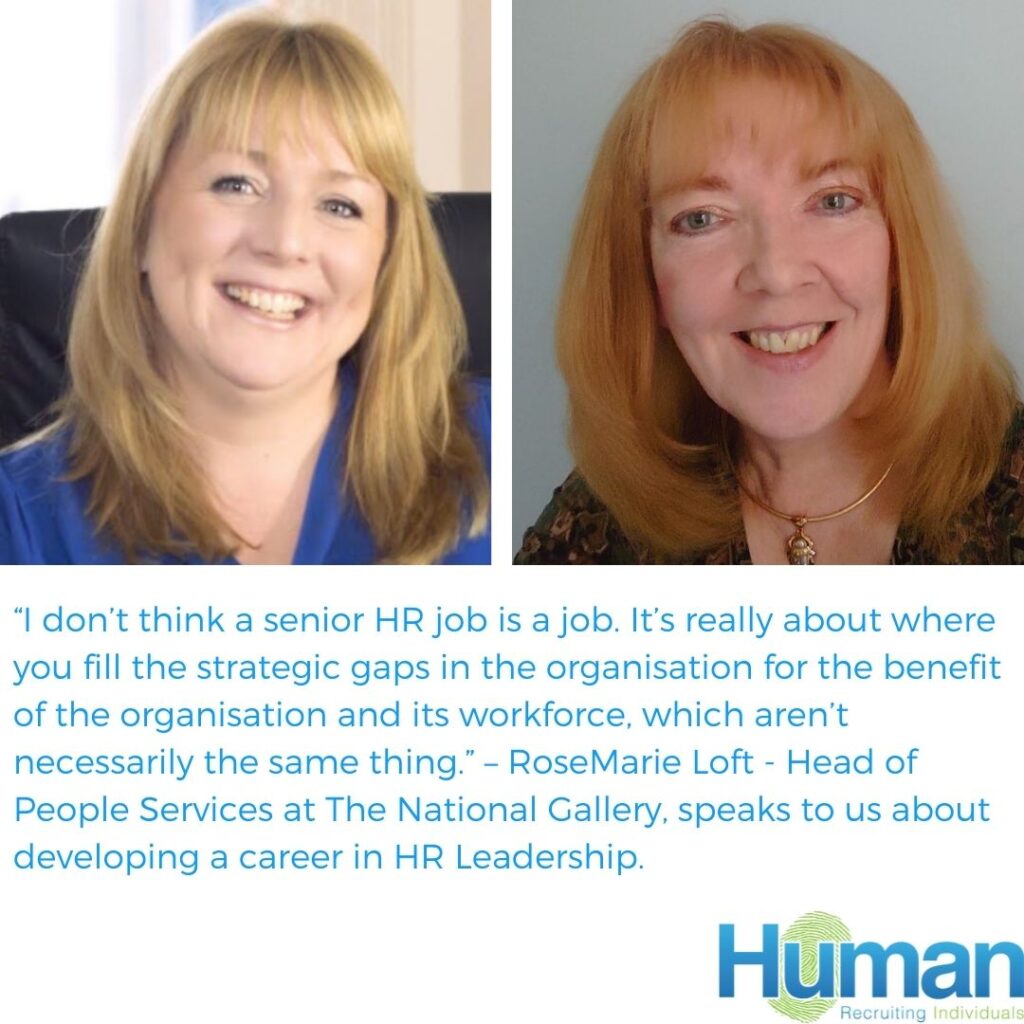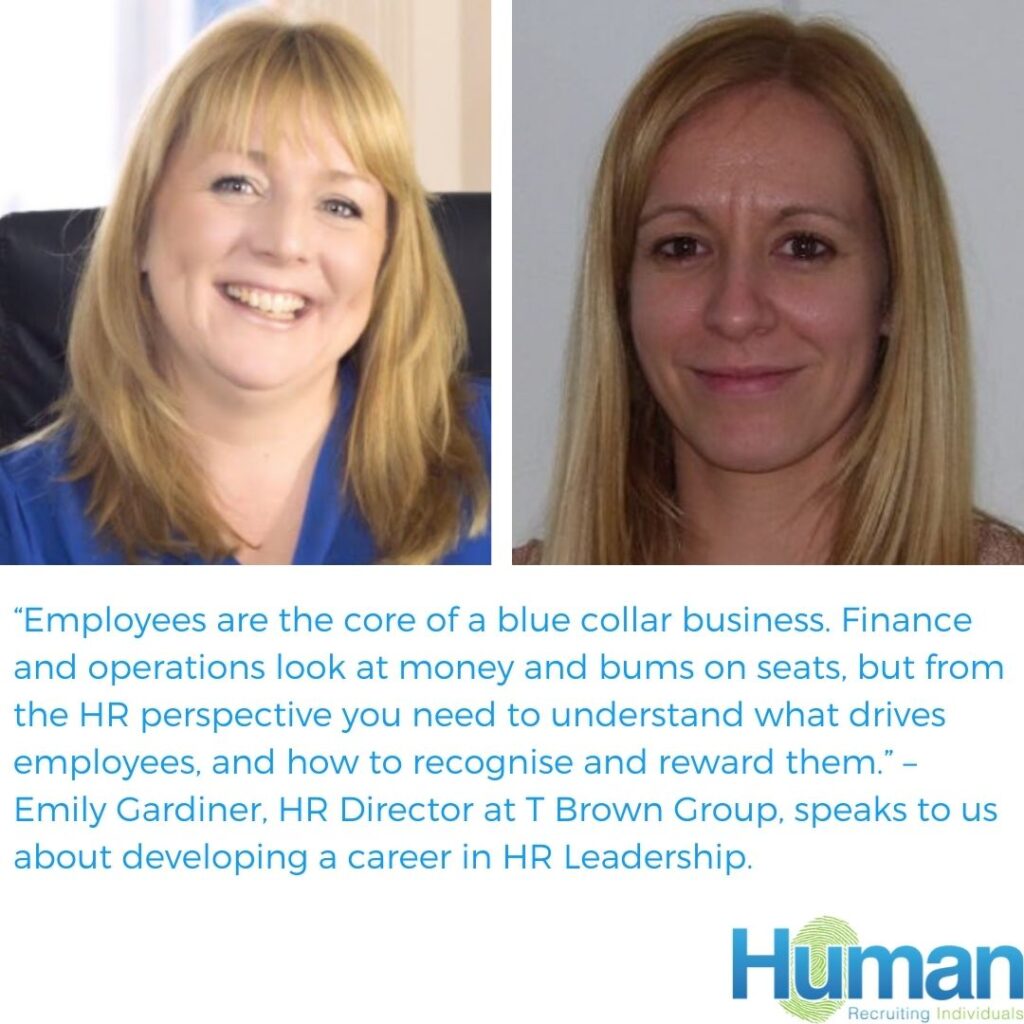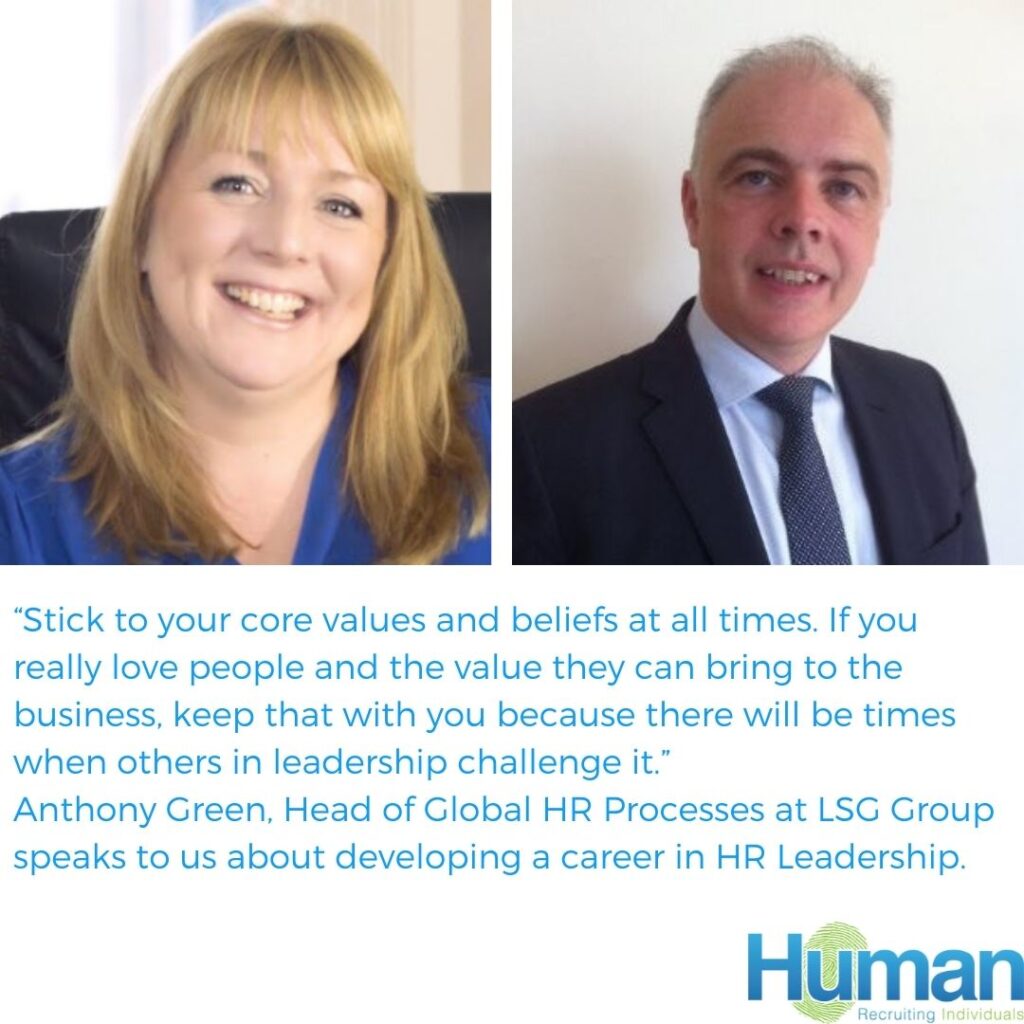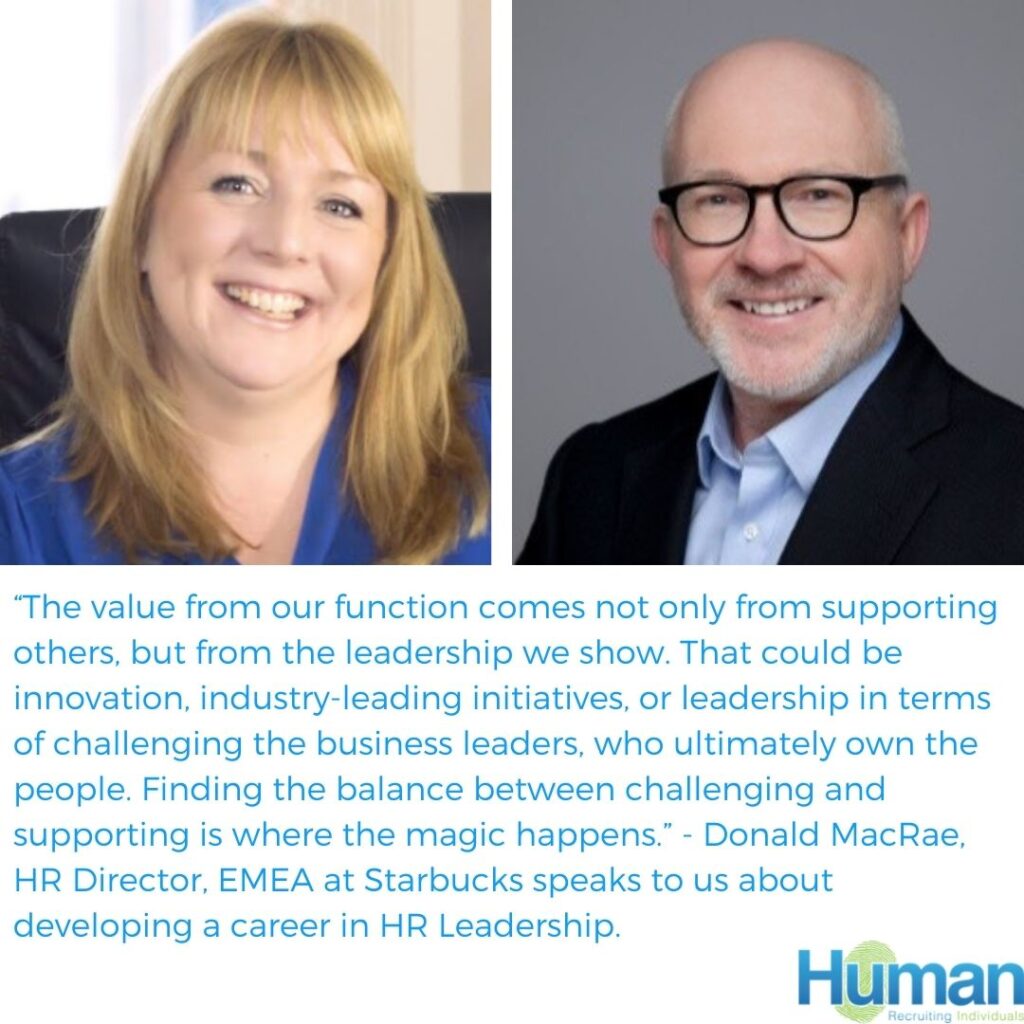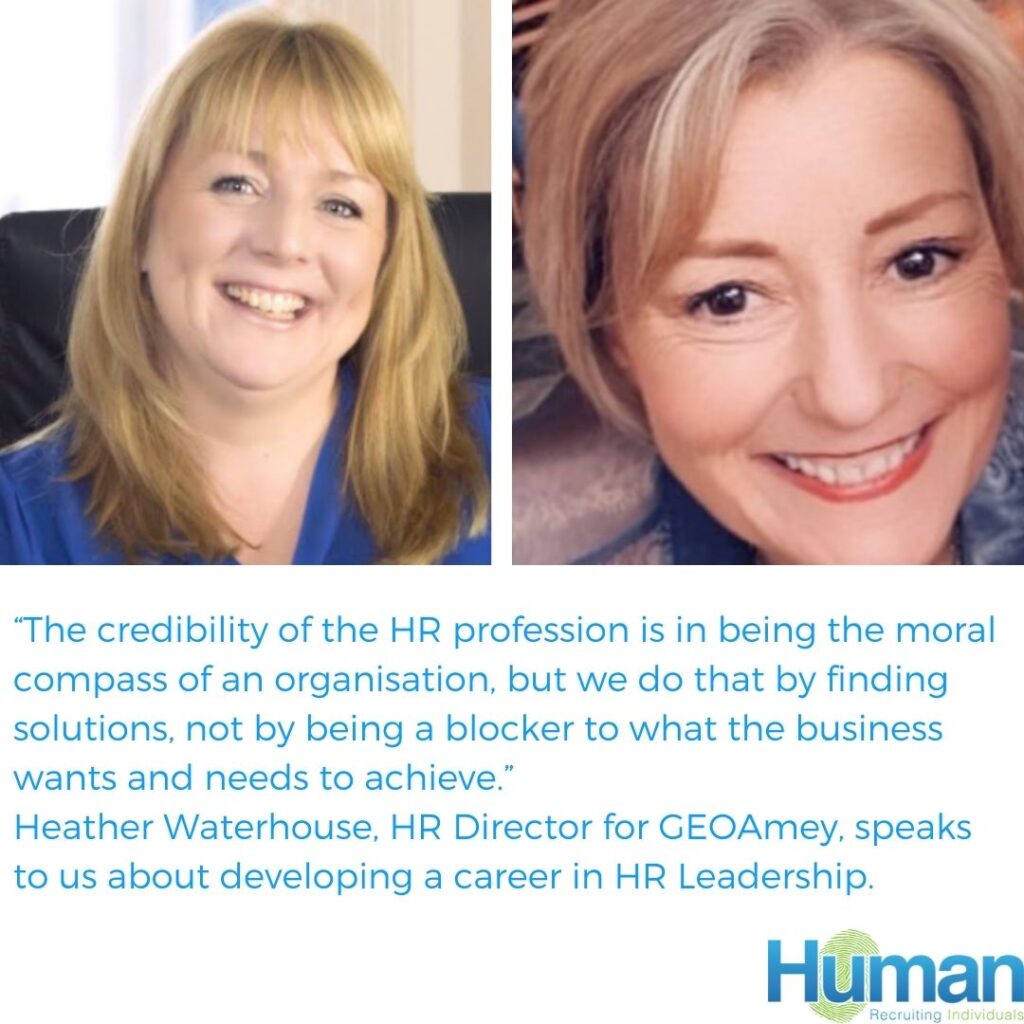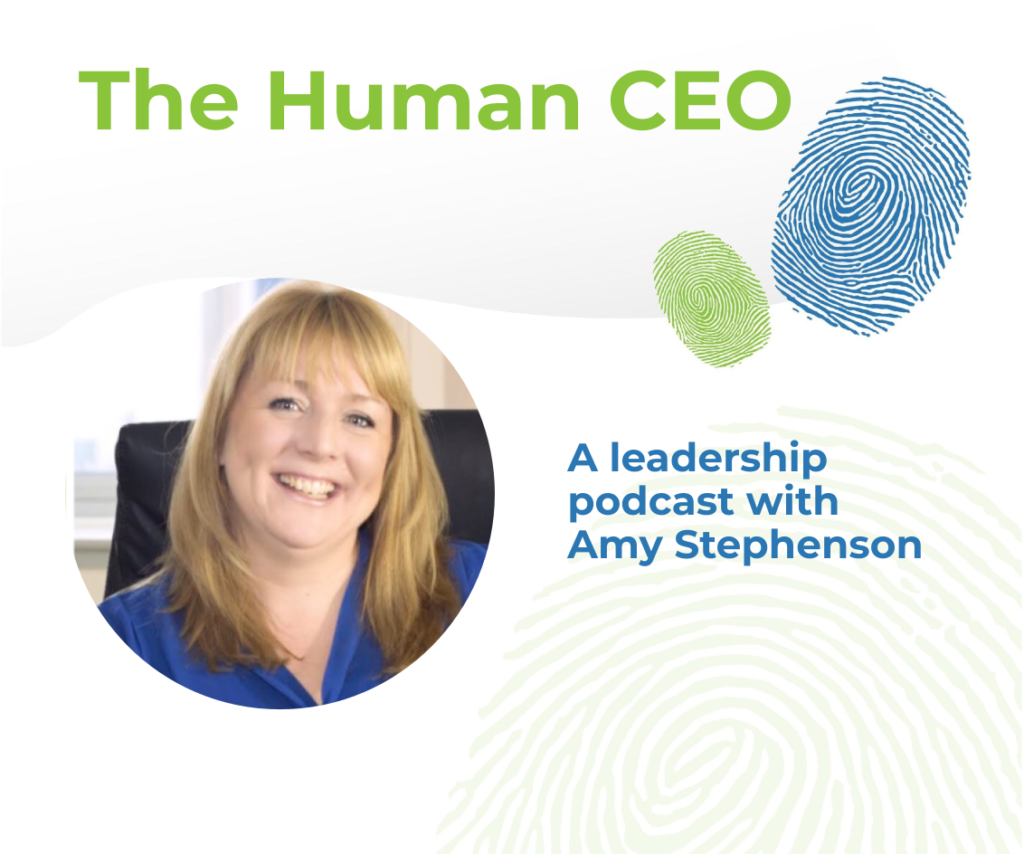“The value from our function comes not only from supporting others, but from the leadership we show. That could be innovation, industry-leading initiatives, or leadership in terms of challenging the business leaders, who ultimately own the people. Finding the balance between challenging and supporting is where the magic happens.” – Donald MacRae, HR Director, EMEA at Starbucks speaks to us about developing a career in HR Leadership. As part of our commitment to supporting candidates to develop fulfilling careers, we’ve invited some HR Leaders to share the secrets of their success. This week, we had a great conversation with Donald MacRae at Starbucks, who began his career in computer programming before discovering his love of HR. Donald worked at Logica in various business partnering roles in the Netherlands before becoming HR Manager at Nokia in 2001. Then after two years in Director level roles with European responsibility, he was promoted to VP, moved to Finland, and held roles with global responsibility for different business units. In 2012 he expanded his international exposure with a move to Beijing as HR Director, Nokia China where he led a team supporting all businesses represented in China. Following Microsoft’s integration of Nokia, Donald joined Microsoft and relocated again, this time to the U.S. to take on a HR Director role, focussed on strategic talent and workforce planning. In 2018, Donald joined Starbucks where he worked in Seattle as Director, Global Supply Chains before transitioning to Director, EMEA, based in the UK in May 2021 where he leads teams of business partners, learning & development, and talent acquisition. Can you tell us how you got into HR and how your career has developed? I graduated from Aberdeen University with a Computer Science degree and originally joined Logica (now CGI), a software company, as part of their programming team. I was based in their Netherlands office and after a few years I was asked to take part in the University Milk rounds and to represent the company as a careers advisor to new graduates. I then joined the company’s rotation scheme to get experience as a HR Manager with a view to returning to the software side as a Project Manager – but I never went back. After four years gaining exposure, I realised HR was my calling. I stayed at Logica for a decade longer, moving around multiple roles, but my core was HR Business Partnering for various divisions and regions. Around 2001, I began to feel an itch to experience something different and joined Nokia as HR Manager at a boom time for the company. I loved the culture and was in my element there. I moved to Finland with the company, was promoted several times and became a VP by 2005. One of those roles was looking after 13 European countries, which was such a rich mixture of culture and countries. After six years in European roles, I transitioned into Global VP HR roles in Corporate Functions, Devices R&D and Mobile Phones, working with the company’s top management. Moving internationally again was a very intentional decision for me and China seemed really interesting. At the time, Nokia was moving elements of my business area to China, but also downsizing the mobile phone business. To get the development opportunity I wanted, I accepted a role moving from VP to Director. To this day I have absolutely no regrets about doing that because the years that I spent in China were one of my best experiences. I spent three years in Beijing as Head of HR for Nokia China. Halfway through, Microsoft acquired part of Nokia so I did a lot of integration work and downsizing. It was particularly satisfying helping the local team to build capacity and confidence. Out of that integration came the opportunity to join Microsoft in the U.S. and having done a lot of work in Europe and Asia, I thought, why not? I arrived in the U.S. in 2015 and got involved with projects around strategic workforce planning as part of Microsoft’s talent center of expertise. This wasn’t my favourite role; it was remote from the business and strategic planning wasn’t a priority focus for the wider business. The experience made me realise that what I loved was general business partnering, leading a team and working as part of a business leadership team. Though I did gain invaluable industry insights to strategic talent planning and have used the learnings. Large companies with a history and heritage have always appealed to me and in 2018 I moved to Starbucks as HR Director, Global Supply Chain. I love the culture here, it’s welcoming, humble and with a focus on human connection. I was based in Seattle for three years before moving back to the UK in May 2021, as HR Director, EMEA. Most of my learnings throughout the years have come from working with great leaders, in business and in HR. They’ve taught me the importance of authenticity, vulnerability, presence, and recognising the mastery of others. I’ve tried to incorporate these learnings into my own style and what I often say to others in HR is that while we help leaders, we sometimes put ourselves in the support bucket. Our role certainly includes support, but there’s a fine balance in coaching and expecting people leaders to take ownership for their people. The value from our function comes not only from supporting others, but from the leadership we show. That could be innovation, industry-leading initiatives, or leadership in terms of challenging the business leaders, who ultimately own the people. Finding the balance between challenging and supporting is where the magic happens. What are the key challenges that you’re seeing in your sector at the moment? One of the main challenges is prioritisation and pacing. At Starbucks we have a well intended tendency to want to do too much, so remaining focussed on what will have the most impact, and being mindful of resources is a challenge across the business, including
